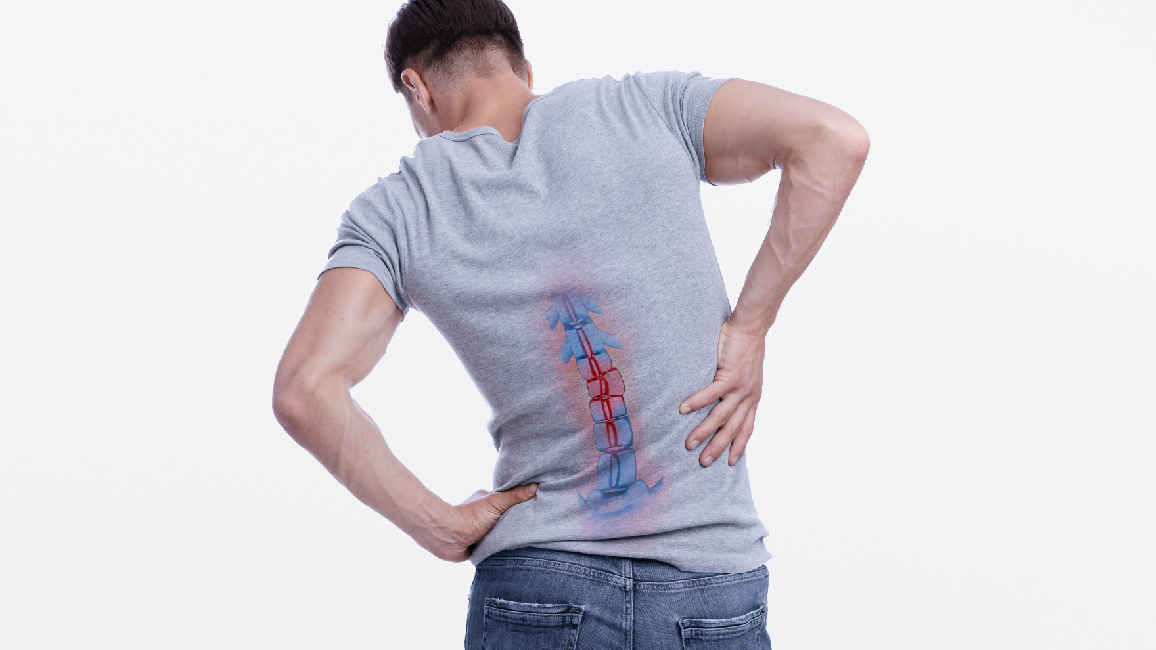
Choose to read by topic:
What is TLIF
TLIF is a surgical technique to treat back pain by inserting an implant to replace the degenerative disc. Fixes the problem of dislocation of the spine and install screws to hold the moving spinal joint back to its proper position.
TLIF is used to treat back pain caused by deterioration of the spinal joints that are unstable or displaced causing the nerve cavities in the area to narrowed until it clamps down on the nerve and cause back pain. The prominent symptoms can be noted as follows.
- Chronic back pain for more than 3 months.
- Back pain along with hip pain that radiates down to the leg.
- Neurological symptoms associated with joint dislocation, such as weakness, urinary tract and stool disorders.
What is dislocation of the spine?
Spinal cord disease Spondylolisthesis is a displacement of one vertebra forward or behind more than usual. Most often, displacement of the 4th and 5th lumbar vertebrae is found because these vertebrae carry most of the body's weight. The severity of the symptoms will vary. Most patients tend to have pain in the lower back and will have worse symptoms after exercise especially when the lumbar bone is administered and may have other symptoms as well, which are divided into 2 parts:
back symptoms chronic back pain symptoms often occur when there is a lot of back movement, such as bending, tilting, or walking. - Leg symptoms, pain, numbness, heaviness in the hip or both legs, the symptoms are severe while walking and the symptoms will be relieved when the back bends or sits to rest. The patient will feel that the walking distance is getting shorter. If the neural stenosis is very narrow, it may interfere with defecation control or urine.
The treatment of spinal disc herniation with transcutaneous lumbar spine fusion surgery, or TLIF; it helps patients with chronic back pain from lumbar dislocation return to normal body movements again.
Indications for TLIF
Spinal cord disease treatment with transdermal lumbar spine fusion surgery or TLIF (Transforaminal Lumbar Interbody Fusion), it will be performed in the case of
- palliative treatment and if the symptoms do not improve, including
- patients with persistent or severe lower back pain
- or have neurological symptoms associated with joint dislocation, such as weakness, urinary tract and stool.
- Patients diagnosed with grade 3 and 4 may need surgery.
- It is a surgical procedure used to connect two or more vertebrae joints.
- It is usually performed to eliminate pain from displacement of the vertebrae and to align the spine back to normal as much as possible.
What is O-arm Navigation
What is O-arm Navigation and how is it useful for TLIF? How does Nakornthon specialize in this field?
The O-Arm Navigation is a device to locate the correct and safe spinal alignment surgery, like a surgeon's third eye. This makes it possible to clearly see the patient’s bones and joints’ structure that have problems. It helps to reduces blind spots that can cause surgical errors.
O-Arm Navigation will help in TLIF surgery by showing different positions of the surgery area. The surgeon will see a 3D image throughout the surgery. This increases the insertion accuracy of up to 99% without affecting nearby nerves.
Nakornthon Absolute Spine Care’s specialists have extensive experience in TLIF percutaneous orthopedic spine surgery and specialize in using O-Arm Navigation to drive successful surgery.
TLIF with O-arm Navigation Benefits
Percutaneous spondylolisthesis, or TLIF, is an operation in which doctors attach the spine together through a small incision in the skin, by using computed tomography (O-arm Navigation) to assist in surgery. Shows the different locations around the surgery area. The surgeon will see a 3D image throughout the surgery. This increases the insertion accuracy of up to 99%. With this new surgical technology, the pain of surgery is greatly reduced, and patients can return to normal daily life much faster.
Advantages of TLIF in combination with computer-guided navigation
- Small surgical incision, significantly reduced pain after surgery
- Shorter hospital stay
- Tool insertion accuracy up to 99%, does not affect nearby nerves
- There is no need for blood transfusion after surgery.
- Able to start practicing walking within 24 hours after surgery
Preparing for TLIF
- TLIF is still considered a major surgery. Anesthesia is performed before the procedure begins. Therefore, the service recipient must have a thorough health examination first, to ensure the body is ready for surgery
- Before surgery the patient will undergo a physical examination. Magnetic resonance imaging (MRI scan) and general physical examination.
- Patients are required to state their medical history, drug allergy or other treatment received. In particular, the use of antiplatelet or anticoagulant drugs, such as aspirin and warfarin, must be discontinued 1 week before surgery.
TLIF Procedure
- The surgeon makes a small incision in the back, about 1 inch in diameter, to relax the compression of the nerve through a tube-like device through a microscope, which greatly enhances the image.
- It shows the location to be operated on, including bones, disc herniation, including the nearby nerves clearly.
- When this is done, a device with the patient's own bone is inserted inside to allow the bones to join later. The O-arm Navigation is then used to create a three-dimensional image of the spine show different locations of the surgery area, showing the position of screws and metal splints.
- Then use a screw to secure it through a small incision through the skin. In total, it takes about 2 - 3 hours.
Risks of TLIF
The Surgery have risks of developing the following symptoms:
- Nerve roots are destroyed and causing nerve ruptures until there is weakness or symptoms of urinary system and infection.
- Bleeding after surgery
- Cerebrospinal fluid leak
- Infected wound
- Exposure to radiation.
- Possible complications of screw fastening at the surgical site, such as improper placement. Fracture of a screw, metal rod, piece or implant used.
- Blood clots in the legs. These blood clot may move to clot in the lungs (pulmonary embolism).
- In some cases, side effects may occur within 1 year after the surgery. However, these symptoms can rarely occur or might not happen at all.
After TLIF Instructions
Patients should follow these suggestions after the TLIF transdermal fusion surgery is completed as follows:
- Absolutely refrain from doing poses gestures and doing activities that require bending your back or lifting heavy objects. By the way, it should be avoided for the rest of your life. Because the screws that the doctor has installed will be able to connect to the bone joints completely after the surgery for about 6 months or more. During that time, the patient must be careful not to dislocate the joints that have undergone surgery.
- No physical therapy is required. But should keep exercising to strengthen the muscles in the spine. Because the muscles around the spine will help to wrap the spine to be strong. To avoid future injuries again. The doctors and physiotherapists at Nakornthon Hospital will teach the exercises for the patients themselves.
FAQ Related to TLIF
Do I need to take medications?
After percutaneous bone grafting, TLIF does not require medication.
Is a brace necessary?
It may be recommended to wearing or not wear as recommended by your doctor.
Can I exercise after TLIF surgery?
You can exercise lightly, but absolutely refrain from or avoid doing postures and activities that require you to bend your back or lift heavy objects and it should be avoided for the rest of your life.
TLIF Conclusion
Even after surgery and inserting screws and metal braces in the dislocated vertebrae, adjacent spinal joints are also likely to deteriorate or move later; if you still do the same routine. Therefore, it is important to take care of yourself and prevent this disease. Including exercises to build strong back muscles regularly. It will help reduce the risk of spinal dislocation in the future.
Why choose Nakornthon Hospital?
At Nakornthon Absolute Spine Care, we are proud to be a treatment center with many spine specialists for results in treatment with a full range of technology for more effective surgery. Nakornthon Absolute Spine Care’s specialists will discuss every procedure with the team of medical consultants; to come to the final conclusion in choosing the best treatment (Last opinion) for all patients.
Therefore, there is no need to worry about its worth and the changes in the body that may not relieve as anticipated. Because Nakornthon Absolute Spine Care would wish all patients who stepped in with back pain problems, resume with a smile and perfect physical fitness once again.
Online Consultation
Article of Spine Center






